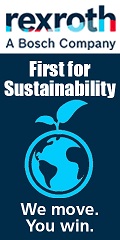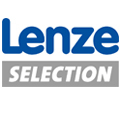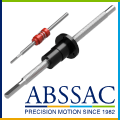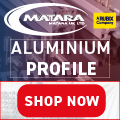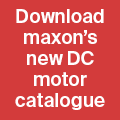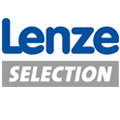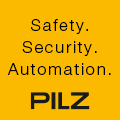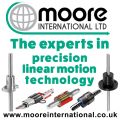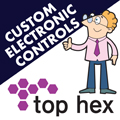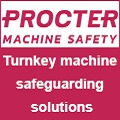
Posted to News on 2nd Oct 2017, 19:19
How to solve the problem of matching drive components
Warren Harvard, Product Manager for Electric Drives at Festo, discusses the challenges facing machine builders and what can be done to improve the selection, connection and configuration of electric drives systems.
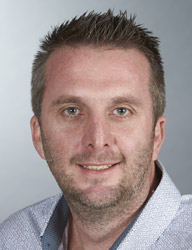
For special-purpose machine builders, being able to specify a complete drive system quickly and easily with total confidence in the performance is key to winning business in an efficient manner. For the replicating machine builder, the challenge is to find a way to build a standard system that can be reconfigured easily and cost-effectively to meet customer standards in terms of fieldbus and connectivity protocols. In both cases it is a highly competitive environment. Cost is critical but it is often the first company to respond with a quote that gains the advantage.
However, there is an inherent conflict between reducing time and reducing cost. Shopping around multiple suppliers can identify lower-cost components; but the all-important final price often masks the associated engineering sourcing, procurement, design and compatibility costs.
Building a system using multiple components from different suppliers is actually complex, time-consuming and risky. There is always the potential that a mistake has been made - particularly when trying to 'marry-up' different manufacturers' data, which is frequently presented in different formats, units, etc. The potential for issues to arise around compatibility and connectivity is high and, with multiple suppliers involved, it is often unclear where ownership of that risk lies.
How does this affect the end users?
Time pressures and a desire to avoid risks can lead to disadvantages for end users. It reduces the opportunities for machine builders to consider all the options and add real value at the design stage. Instead, the tendency is to stay with a proven specification and often to adopt a 'belt and braces' approach. This can mean that the recommended system is not optimised, may be over-engineered to provide a safety factor, and is more expensive than it needs to be.
As a result, the end user can get a less efficient, more complex system than necessary - creating potential service, maintenance and lifetime cost issues.
Problem and solution

The effort and risk involved in deviating from a known solution is a real barrier to cost and performance optimisation. As a result, a machine builder may choose to stick to a known servo electric system that provides top-end performance even when the application does not require it - and there may well be other, more cost-effective technologies that can be used.
For example, if dynamic movement requirements are not onerous, closed-loop stepper motor technology offers the same control capability and can manage similar loads to servo systems, and at a lower cost.
What can be done to improve this situation?
Suppliers need to make it easy for machine builders to match components in order to deliver the required performance: easy to select, easy to connect, easy to configure. Manufacturers of electric drive components can play an important role by providing the tools and products to make it easier for designers and machine builders to make the right choices. There needs to be more understanding of designers' needs by the component manufacturer so that they can provide fast, knowledgeable support through the specification, buying and machine-building process.
What does Festo offer the electric drives market?

And because we offer all the elements, machine builders and designers can take advantage of a free simulation tool that provides a range of technical solutions based on the application requirements. The results provide guaranteed performance, known costs and, critically, the opportunity to make fast, optimised risk-free decisions.
A good example of Festo's ability to offer performance-oriented solutions is the Optimised Motion Series (OMS). We used our expertise to develop a total package that offers one cost-effective solution for many positioning problems. Based on closed-loop stepper motor technology, the Optimised Motion Series of electric drives has been developed to provide easy-to-use, multi-position control at a highly focused price point. OEMs and machine builders can therefore order a complete electric drive system using one product code and get all the components they need - including the cables, connectors and gearbox - delivered in one box. Because you are dealing with one supplier for all the components, compatibility is guaranteed.
What about connectivity?
The OMS Series uses Festo technology to facilitate connection to various end user protocols. Machine builders can therefore design a standard electric drive system that, with a simple inexpensive change to the connectivity node, can communicate directly with a wide range of systems such as:
- I/O-link
- CANopen
- DeviceNet
- EtherCAT
- Profibus
- Profinet
Even the programming is supported with simple, modern, web-config tools. All parameters are downloaded from the Festo web-server rather than having to be entered manually, which significantly reduces programming time and the potential for error.
The Festo advanced CMMO stepper technology enables lower-cost motor technology but with advanced control capability, including force and position control, delivered in a smooth and optimised motion profile. Open-loop control is the lowest-cost option but, where accuracy and continuous monitoring is required, then encoder feedback enables the system to operate in a cost-effective and full closed-loop servo mode.
What about support with specification and commissioning?

You just enter the application details and the software comes up with a range of technically matched solutions. The software's inbuilt mechanical knowledge and understanding takes into account the mechanical axis - whether piston rod, rodless gantry, cantilever-based linear drives or guided rotary tables - and provides the optimum product choice in terms of bearings, guidance and application demands such as mass, centre of gravity, off-sets, velocity, etc. Electrical compatibility is assured because once the optimum mechanical drive is selected the motor and gearbox are matched to the performance requirement.
The Positioning Drives software provides information about the safety margins offered by the proposed products and systems so the designer can make an informed decision - all of which makes electric drive selection quick, simple and risk free. There is also simple, free access to CAD drawings in standard native formats, electronic datasheets for easy technical file compilation, performance assurance and a single complete system price, so all the information is available in one place.
Once the machine builder has taken delivery, the chosen OMS package can be assembled out of the box using one tool - an Allen key. Because all the components come from one manufacturer the mechanical interfaces are designed to work together to provide secure, aligned axes; so there is no need for additional, expensive brackets and adaptors. When installation is complete, Festo's free web-config tool makes it fast and error-free for the controls or commissioning engineer to set-up and prove the system.
What are the benefits of the OMS electric drive package?

- Speed to design, thanks to the free software selection tool
- Modularity in terms of connectivity options to fieldbus systems
- Fast to quote customers with different fieldbus options - no need to redesign whole electric drive system, just change the fieldbus node
- Fast delivery - one week
- Performance guarantee of the system - proven in the software
- Cost-effective technology (closed-loop stepper appropriate for many applications)
- Simpler process - one supplier, one order, one purchase order number, one delivery
For more information and to watch a short video about easier selection, connection and configuration of electric drives, go to www.festo.com/cms/en-gb_gb/63902.htm.



